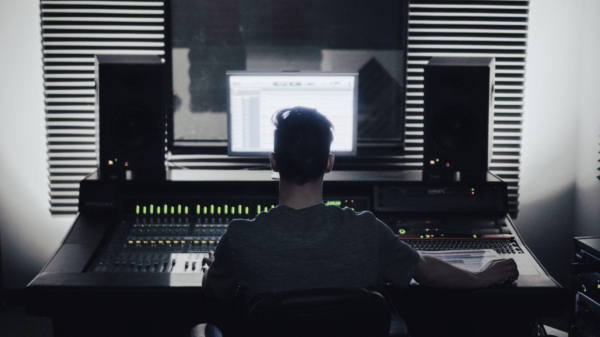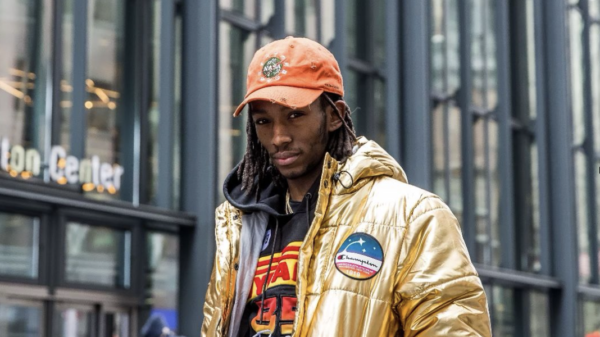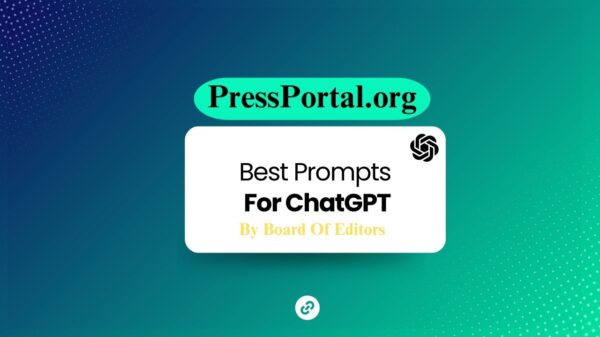Bringing together the two most famous people in their respective fields is no small feat, as music-industry marketing executive Dan Beck recalls in his new memoir, “You’ve Got Michael”: Living Through HIStory. In an exclusive excerpt from the book, Beck recalls how he paired Michael Jackson, the King of Pop, with Michael Jordan, the King of Basketball, for Jackson’s “Jam” video.
The song appeared on Jackson’s eighth studio album, Dangerous (1992), and was the fourth single to be released — nearly half a year since the album hit shelves. At the time, Jackson’s label, Epic, was worried about waning interest in the project, which wasn’t immediately living up to the legacies of Thriller and Bad. But Beck latched onto the B-Ball lingo in Jackson’s “Jam” and envisioned a memorable clip in which the two living legends could teach each other a few new tricks. Here’s how Beck remembers the time:
The further into an album’s release, the tougher it got to extend the life of the project with singles and videos. With Dangerous, we were already three for three with “Black or White,” “Remember the Time” and “In the Closet,” but we would need another great video to keep rolling. It didn’t take much thinking to connect the song “Jam” with basketball. And it also didn’t take a genius to associate the greatest musical entertainer with the current greatest basketball player on Earth. One luxury of working with Michael Jackson was that you could think so ridiculously big as to bring Michael Jordan into the picture.
By 1992, the superstar of the Chicago Bulls was the undisputed King of Basketball — if not all sports. “Dunking” and “jamming” had entered the urban lexicon. To be a baller was the height of cool.
The idea of bringing “Jam” to video life with a basketball theme came to me during the first discussion of the song as a single. What could Michael Jordan share with Michael Jackson? Jordan, of course, could show Jackson some B-ball tricks. But Michael had a few great ones of his own — especially the moonwalk. Reminding his audience of that amazing move and associating him with Michael Jordan could have just the right impact. At the end of the meeting in which “Jam” became the fourth single, I announced that I was going to try to create MJ squared: each Michael would teach the other his trade.
Editor’s picks
We knew the basketball legend might turn us down, but there was another concern. As the meeting broke up, one key member of the promotion staff buttonholed me in the hallway. “You’re going to ruin Michael Jackson. There’s no way he’s going to be able to look good standing next to Michael Jordan.”
Yes, we had all worried about Michael being wimpy. But in this case, I had no hesitation. Michael seemed to thrive in competitive situations. We had done In the Closet with Naomi Campbell, who took no prisoners. I thought Jordan would bring out the best in Michael. And Michael, for all the work he put into his choreography, was an athlete in his own right. Maybe we just didn’t look at it that way.
I took the idea to Michael Jackson’s co-manager, Sandy Gallin, since the cost of hiring one Michael would ultimately fall to the other. He responded that his client liked it. I noted that it was the middle of the basketball season and the Bulls’ schedule would extend into the playoffs. It could be tough to make this happen.
To my excitement, Sandy called a few days later to let me know that Jordan was available, and that he was really into it! They could make the deal work. (I never knew the financial details. There seemed to be some trade-out that made the cost of hiring him achievable. Our budget for the production was around $400,000 — enormous for a music video but, based on the scope we envisioned, an absolute bargain.)
Related Content
In the meantime, I had been thinking of potential directors. We had been using a small indie production company out of Chicago called H-Gun to shoot some of Epic’s metal artists. We hadn’t spent more than five grand on a video with H-Gun, but they were inventive young guys who shot on the fly and made simple but great gritty street videos. I sent them my short description of the concept and asked them to send Sandy a director’s reel. There was no way that H-Gun could handle a production as large, demanding and complicated as a Michael Jackson shoot, but I wanted to shock Sandy and Michael with this low-end, rough-edged production, to get them to think differently about the clip. No Hollywood production. No glam squad. Just down and dirty.
Then I began thinking about production companies and directors who could actually pull this off. Hollywood film people can do amazing things, but in the early days of music video, the ability to work within our budgets was rarely one of them. Even advertising directors were often too pricey for us. But because Michael would surely recoup any money spent, we had far more room to maneuver.
There was another problem with Hollywood film companies: they couldn’t meet the pace we needed. Our shoots were generally one-day jobs. A two-day shoot was a big deal. We often decided to make a video, did the pre-production, shot it and completed the post-production in three or four weeks. We had to in order to create sixty to seventy videos a year.
There were only a few companies that could handle a sophisticated shoot required for an artist like Michael Jackson and do it quickly. I had a demo reel from a director named David Kellogg, a commercial director who had a gift for adapting his shooting style to the subject and situation. He had shot a number of music videos, including one for Heavy D, who did the rap on the “Jam” track, and was repped by Propaganda Films, who were big enough to handle the job but agile enough to get it done swiftly. They had established themselves as arguably the top music video production company in the business and had corporate funding. I had great trust in one of the company’s founders, Anne-Marie Mackay, who I had known since almost the first day she arrived in America from Britain.
I flew to L.A. and met with Propaganda, who had already created storyboards for the video. I also met with David Kellogg and his team. He had viewed H-Gun’s demo reel and was in synch with my thoughts on the vibe and texture of the video. In discussions with Michael’s camp, he had added another artist cameo: Kris Kross, the teenaged hip-hop duo that was hot at the moment. They fit the concept and brought another dimension of warmth to the playful interactions between the two Michaels. Now we had grit and texture, joy and levity. I could not have been more comfortable with the plan.
Michael liked to have a one-to-one relationship with his music video directors. It gave him a sense of control, with the comfort of knowing that his management office and record company would follow up on details. I had the comfort of Epic’s head of video production, Scott Spanjich, who reviewed the budgets and details of the shoot. Scott took care of the nuts and bolts; my job was to make sure Michael was happy and to intervene if he wasn’t.
If things were right, Michael let people do their jobs, which energized the professionals who worked with him. When he had concerns, he presented them in a predictable pattern. Initially, he never complained or disputed an idea. He usually started with a question. That meant he had reservations. If the answers weren’t to his satisfaction, you could sense him hardening in his position. He could be stubborn.
When I asked Michael if he was good with the “Jam” plan, I got a simple and enthusiastic, “Yes!” It was as simple as that. There was no need for me to probe deeper. We could proceed full steam ahead with confidence.
As I got in my rented car outside of Propaganda’s headquarters in an industrial area of Hollywood that day in late March 1992, it dawned on me that I had, for the first time, engineered the strategy for a Michael Jackson music video. That felt good, but the best part was that we could get Michael and Sandy’s office and a production company and director together so efficiently. Gazing at the process from the outside, it had always looked so enormous, complicated and political. I was relieved to be where we were with the pre-production, as I was sure I would be called upon to do this again.
The shoot was scheduled for the weekend of May 1st and 2nd, during a four-day gap in Jordan’s playoff schedule.
I contacted an assistant to David Falk at ProServ, who managed Jordan’s career. I was disarmed by her enthusiasm and openness, especially when she told me how excited Jordan was to be doing the video with Michael. When she asked if I would be at the shoot, I explained that my wife Clare was eight-and-a-half months pregnant with our second child, so I did not expect to be able to travel.
On Friday, April 24, I got home in time to watch the Chicago Bulls’ blowout of the Miami Heat in Game 1 of the first round of the Eastern Conference playoffs. Jordan had a big night, scoring 46 points in the 113–94 Chicago win. I thought how perfectly this situation was playing out for us. Michael Jordan’s star was becoming bigger and bigger, and we had him for the “Jam” video.
After the game, I had just gotten to sleep when Clare nudged me and said she was feeling contractions. We got out the stopwatch and began counting but quickly realized that our daughter wasn’t going to wait long to come into this world! We jumped in the car and headed to the hospital, where Rachel arrived ninety minutes later. By Sunday, we were home, glowing with the miracle of our growing family. Life was bigger and brighter than I could ever have imagined.
Sunday evening, with everyone asleep, I clicked on the television. In Game 2 of the best-of-five series, Jordan and Scottie Pippen scored 63 points between them, and the Bulls won 120–90.
I took Monday off but felt pressure to get back to work Tuesday. As I pulled my head together and focused on the various projects we were working on, I was updated by Propaganda staff on the shoot scheduled for that weekend. Everything was in order.
Our weekly label meeting took up half of Wednesday; afterwards, I scrambled to catch up on calls and follow up on issues that arose from the meeting. In the midst of all that, it suddenly occurred to me that if the Bulls did not win that night’s game in Miami there would be a Game 4 in Florida, and we would have a huge problem. Propaganda already had a crew doing pre-production in Chicago. If we lost Jordan, the entire shoot would have to be canceled at enormous cost. And when could we possibly reschedule?
If Jordan’s playoff schedule changed, we’d have to see about Michael Jackson’s and David Kellogg’s schedules as well. I called ProServ to begin mapping out Plan B. I tried to present this potential mess in a measured manner to David Falk’s assistant. I didn’t want her to hear the panic I was starting to feel. I offered, “Regarding the Michael and Michael shoot, what if the Bulls lose tonight?”
In the warmest and most confident voice I think I have ever heard, she told me not to worry: the Bulls were going to win. Simple as that. No need for a contingency plan. The Bulls had no intention of playing a Game 4.
I was caught totally off guard. It was as if I were speaking to Michael Jordan himself. His entire management team exuded the same confidence and certainty. I simply said, “Okay” and hung up. If there was going to be a disaster, it would be tomorrow’s disaster.
The train out of Penn Station got me home to Long Island around 8:30. I ordered a pizza and turned on the tube. The first quarter of Game 3 had just ended; when the coverage resumed after a commercial break, the Heat were killing the Bulls, 33–19!
I don’t think I’ve ever gotten into a sports event with such focus. I answered the door for the pizza delivery but spent every other moment glued to the set. During a commercial break in the second quarter, I thought, “I have a $400,000 bet on this game!”
By halftime, the Bulls had gained some ground, but the Heat were still leading 56–51. Heartburn rose in my throat from wolfing down the pizza, plus I was feeling ill about the outcome of this game. Although the Bulls continued to come back, at the end of the third quarter the Heat still led by one point, 80–79.
Between the shots and rebounds, I was plotting how we could reschedule the shoot, and how I was going to tell my boss what had happened. I should have thought of this. My personal life and my work life were out of control! It was all good, but with Rachel’s birth, it had all overwhelmed me, and I lost focus. Ouch! 400,000 bucks!
The game ended around eleven p.m. with the Bulls up 119 to 114. I was a limp rag. Sitting there alone, I laughed at myself as well as the situation. This was all Michael Jackson. This was the crazy stuff that permeated everything around him. You couldn’t make it up. You couldn’t anticipate it. If you were on a ride with Michael, this was just the kind of stuff that happened. And it was making me crazy!
I did not go to Chicago for the “Jam” shoot. Word was that the two Michaels hit it off famously and had much to teach each other about basketball and dancing. Both men approached the music video with the confidence that accompanied their own unique, physical genius. No one was surprised with Michael Jordan’s exquisite ball handling and footwork on the basketball court. His knowing smile, as he deked Michael Jackson with his moves, exemplified his MVP status in the NBA. Likewise, Michael Jackson’s dance moves illuminated his stunning choreography skills, as he coached Jordan to follow his steps.
The truth and joy of the video was how each of these legends disclosed his limitations to the other’s craft. Jackson was hopelessly out of Jordan’s league on the hardwood. And Jordan revealed his awkwardness (amid smiles) as he tried to copy Jackson’s choreography. As viewers, we got it. They were unquestionably masters of their own fields; their transparency was endearing.
Trending Stories
When we received the rough cut of the video, the reaction was unanimous. Kellogg had given us exactly what we wanted. The video was entertaining, edgy and wove the relationship between the two MJs beautifully. The first ten seconds of the video was an exact reproduction of a basketball rolling through a muddy, debris-strewn lot, just as seen in the low-budget H-Gun demo reel I had sent to Sandy. It was an isolated shot, certainly not a copyright infringement, but similar. Once the video exploded onto MTV and other video outlets, one of the guys from H-Gun called me to protest, claiming we had taken their entire treatment. I reminded him that I had sent him my treatment of the concept before we had even begun the discussion. He agreed, and the matter was closed.
© 2025 Dan Beck. Excerpted with permission from “You’ve Got Michael,” published by Trouser Press Books






























